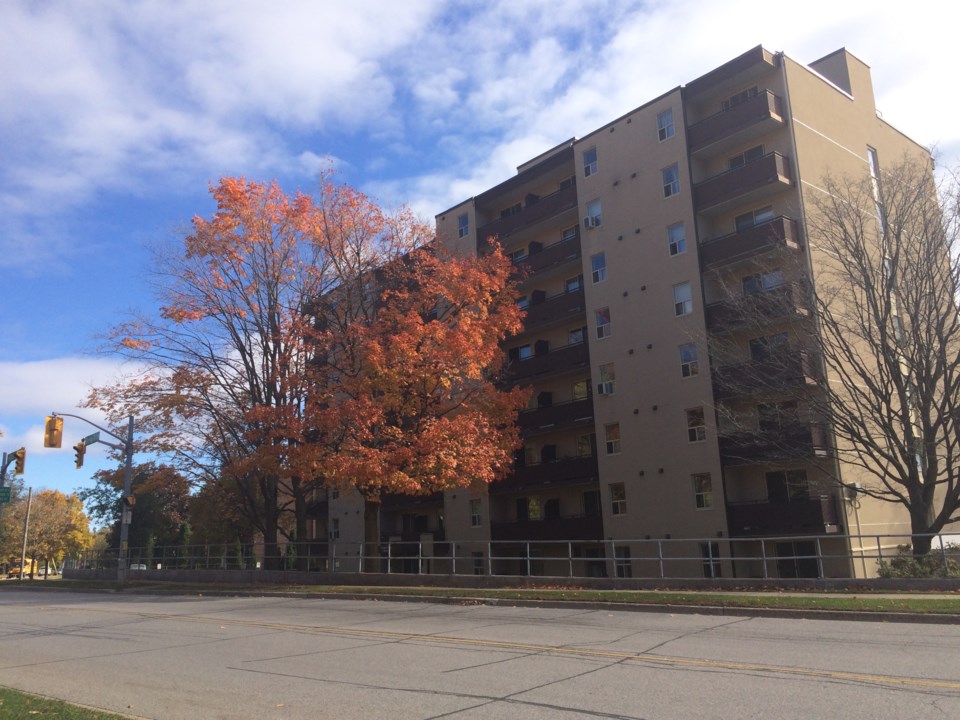Simcoe County will pour cash into helping lay the foundations for affordable housing projects in Wasaga Beach, Bradford West Gwillimbury and Penetanguishene – but that has Barrie feeling left out in the cold.
The county will assist those smaller municipalities with design and cost analysis for projects, as the local municipalities offered to waive costs such as building and planning fees and legal and surveying expenses, as a way to help the county move forward with its 10-year Affordable Housing Strategy.
That strategy calls for the construction of 2,685 additional affordable units by 2024.
Barrie pitched two downtown projects – one at 26 Mary St., the other at 58 Maple Ave.
But county staff say they’d like to take a look at county-owned sites in Barrie to consider whether to sell some, as land values rise, and create a service hub similar to a redevelopment in Collingwood.
“In Barrie, the Simcoe County Housing Corporation has a number of scattered units that are not part of a bigger complex. Is there an opportunity to sell some of those, look at efficiencies and at the income to support a new build,” said Greg Bishop, Simcoe County’s social and community services manager.
He noted the Collingwood project will include an Ontario Works office, as well as office space for “like-minded” agencies that help those who rely on affordable housing.
“(The Barrie rationalization project) would include a strategic real estate process or partnership and would be looking at properties,” he added.
But Barrie Mayor Jeff Lehman wasn’t keen on that approach. Instead, he advocated supporting affordable units that fit in and blend into existing neighbourhoods.
“Maybe the math (of the county’s rationalization plan) is a good one in the city. The math works well today because of the value of land the Simcoe County Housing Corporation owns,” he said.
But the math isn’t what the county should be focusing on; the county should be aware of the stigmatization such an approach could create, he said.
“The properties we own and the county owns are integrated well into their neighbourhoods. To me, it’s successful integration,” he said, adding in a meeting last week with Blake Street residents, they didn’t know a nearby building was a county affordable housing project.
“(They) had no idea their neighbours were county-assisted,” said Lehman.
“We in Barrie are trying quite hard to implement affordable housing in a way that integrates it into neighbourhoods rather than clusters it”
Bishop said the county would include market-rent units in its project, which decreases the segregation of county-assisted families.
“It’s an approach to ensure community-healthy builds,” he said.
The county used a series of criteria to evaluate and rank 11 project applications
Also left out was Tay Township, which Mayor Scott Warnock said did all it could to lay the groundwork for a project on 3.2 acres, a project that could include a developer.
“Obviously we are disappointed we were not successful,” said Warnock. “It’s a hot-button issue in our community. We have to look at other options.”
*************************
Simcoe County used a series of criteria to rank affordable housing projects.
Here are the key ones:
Mandatory: must be located within a settlement area.
Other considerations:
- host municipality offers fee waivers and taxes
- host municipality puts up land and/or building
- parcel size: the larger, the better, for partnership opportunities
- topography
- site fitness: is it clean or contaminated?
- Proximity to schools and community agencies, such as Ontario Works, mental health.
- Proximity to shopping, recreation and transit
- Project density



